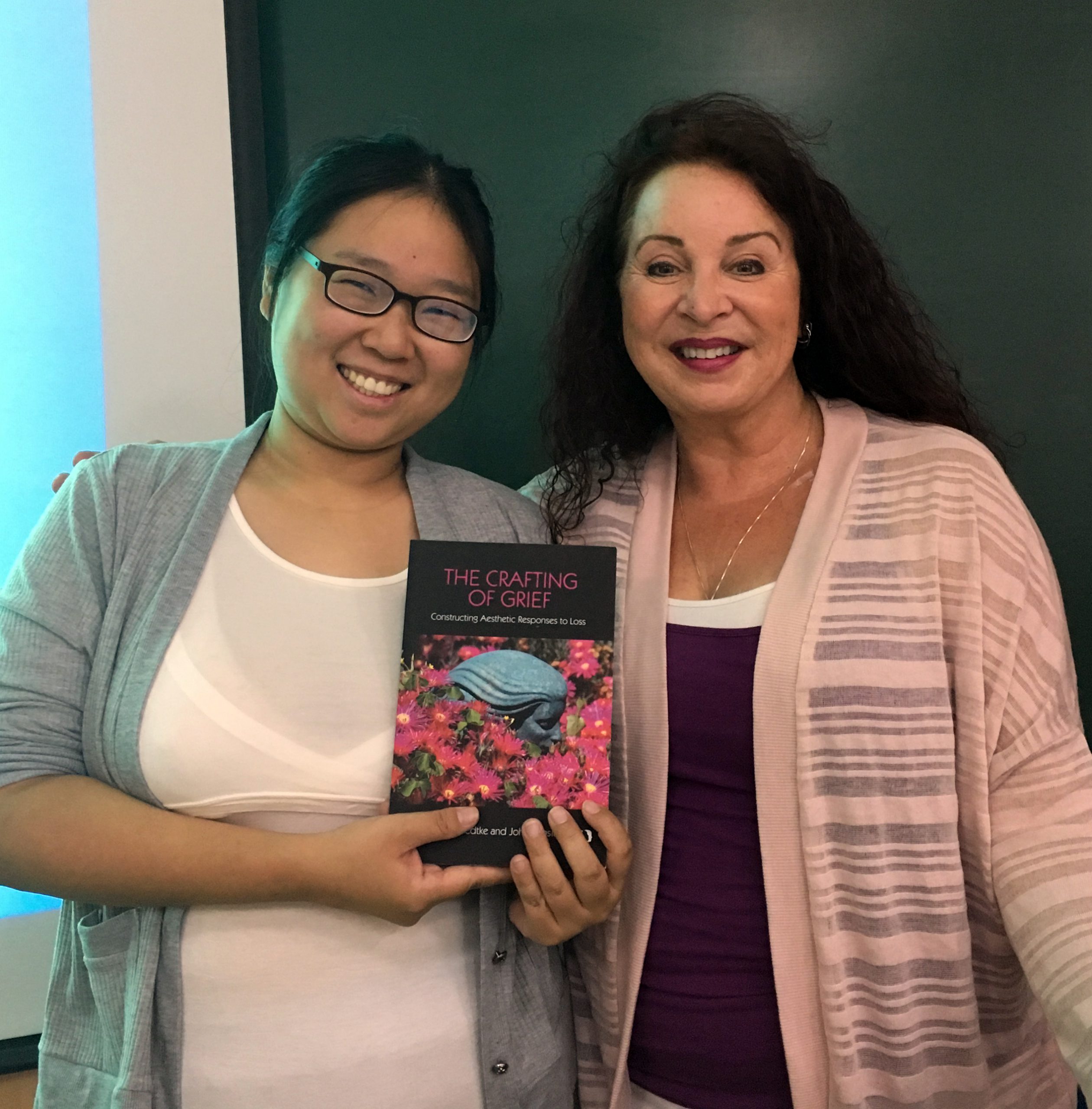
“It is true, I think, that they only seem to have gone, for that lovely store of golden years which you made together – years of life well lived, full of delightful interests shared and lovely pleasant things, is really as much with you with you now as say last month – last year – anytime”
Rex Whistler to Mrs. Belloc-Lowndes on the death of her husband. 28 March 1940
In Harding & Dyson, 1999, p. 166. A book of condolences.
When a loved one dies, the holidays can be especially challenging. For some, even after years have passed, sadness can visit. The missing of our loved ones is often punctuated by imagining times gone by when we shared holiday rituals together or by TV commercials telling us we should be happy, should be with family, and distracted by gift giving. Holidays can be particularly bittersweet when we are sharing moments of happiness with people alongside feeling the pangs of grief that are often held in silence.
Relationships are always forming, recreating, shifting and creating new spaces for connections to emerge. While we may have many rituals we shared with people who are no longer here, grief has also asked, and sometimes, forced us to create new practices and rituals. Practices to invite stories of love and remembering the moments of strength, connection, warmth that we shared, where they possible, would be of particular interest as the New Year arrives. Where do we hope to carry our loved one’s stories into our day to day lives? Where can they both take up a place in our hearts and a place of acknowledgment in our communities?
Family conversations often evolve around social rituals, both small and large. The challenge for remembering lies in finding ways to include the dead in these conversations. Here is one story about a family who found a creative way to do this.
One of the families I worked with was very much in love with their father/grandfather. They adored him as a kind and living presence for all of them. Whenever they had a question or problem, they knew that they could come to him and he would patiently listen. He was a leader in his family and in his community, as well having been an influential medical practitioner and was strongly committed to a legacy of civic responsibility.
After he died during the month of November, his family struggled with how they were going to continue to have his presence with him over the upcoming Christmas holiday. As I spoke with four of his children, their house was already filled with decorations of the season. I asked them about this. They explained that their father always loved Christmas, particularly as it meant special time for family gatherings. Traditionally, they would have him “play Santa” and dress up in a Santa suit to hand out presents on Christmas Eve. They feared that this Christmas would be too painful to continue with some of the joys that previous years had brought.
They told me how the Christmas stockings were always a lovely family time. He particularly loved watching the children find the small presents, candies and money that he hid for them deep in the stockings. I inquired if they were going to hang his stocking alongside the others this year. Did they think he would still like to have his stocking hung up?
They spoke about this possibility and, as they did so, a wonderful thought grew. They started to tell many of the stories connected with Christmases gone by. What if they were to record these stories? They decided they could make a few notes and place them in his stocking hanging by the fireplace. It was a gift of love to him, honoring some of the best of what had been in their years together, but also an act to bring his love in to the present day.
Christmas Eve rolled around and they all gathered just as they had done for years. After the smaller children had unwrapped their stocking stuffers, they sat down to dinner. Slowly, the family began to pull from this kind man’s stocking, all the little slips of paper and notes of stories that they each had contributed with precious reminders written on them. As each was read aloud during dinner, more stories began to grow about their connection with their father and grandfather.
The second year following his death, Christmas came around again. In the mail I received a note from this man’s wife. “We are well set up for Christmas with the kids and grandkids doing most of it. I have a little red votive candle in the nice little holder that you gave me last year…. His Christmas stocking is still at the head of the line with last year’s notes still in it, and we’ll add more this year. Don’t know how many years we will keep that up, but it works for now.”
As I reflect on the approaching New Year, and recall the love that lived in this family, I am reminded that we all have ways in which we can honor old rituals alongside the new ways of life, and death. We may not have chosen this path, but death has called us to form a new connection to those we hold dear in our hearts, bringing them along with us, every step of the way.
